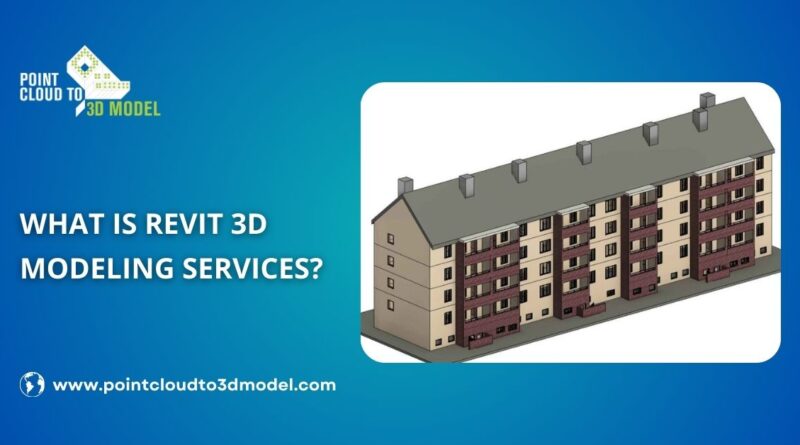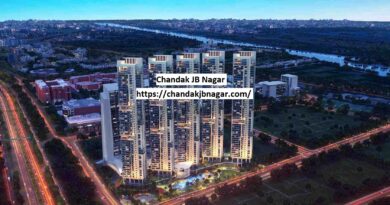What is Revit 3D Modeling Services?
In the architecture, engineering, and construction (AEC) industries, innovation is the key to success. A major technological breakthrough that has revolutionized these sectors is Revit 3D Modeling Services. As a robust tool for Building Information Modeling (BIM), Revit has transformed the way professionals design, plan, and manage construction projects.
This article explores what Revit 3D modeling services are, their benefits, and their importance in modern construction and design practices.
Understanding Revit
Revit is a software platform developed by Autodesk that allows architects, engineers, and construction professionals to design buildings and infrastructure in a 3D environment. Revit focuses on Building Information Modeling (BIM), which goes beyond traditional 2D drafting by embedding a high level of detail into each design.
Every component in a Revit model is rich with data, including material specifications, structural details, and cost information. This means that Revit is more than just a 3D design tool—it’s a holistic platform for managing the entire lifecycle of a building project, from conception to construction and even through to maintenance.
What Are Revit 3D Modeling Services?
Revit 3D modeling services encompass a range of offerings that leverage the full potential of the Revit software. These services include:
1. Architectural 3D Modeling
Creating detailed 3D models of building structures that include architectural elements like walls, windows, floors, and roofs. This service helps in visualizing the final design before construction begins, providing clarity for architects and stakeholders.
2. Structural 3D Modeling
This involves modeling the structural aspects of a building, such as beams, columns, and foundations. With this service, engineers can ensure that the building is structurally sound and compliant with safety regulations.
3. Mechanical, Electrical, and Plumbing (MEP) Modeling
Revit 3D modeling services can also be used for creating detailed models of mechanical, electrical, and plumbing systems. This allows engineers to coordinate the MEP systems with the architectural and structural components to avoid conflicts during construction.
4. Clash Detection and Coordination
A key feature of Revit is its ability to detect clashes between different building systems (e.g., HVAC ducts conflicting with beams). Revit 3D modeling services include clash detection, ensuring all systems are designed to fit together without issues.
5. Visualization and Rendering
Revit offers high-quality rendering and visualization tools, allowing users to produce realistic images and animations of their designs. This is especially useful for presentations and marketing purposes, helping clients to visualize their projects in 3D.
6. BIM Data Extraction
One of the greatest advantages of Revit is its ability to store detailed data for every object in a model. This data can be used for scheduling, cost estimation, and project management. BIM data extraction services leverage this feature to provide clients with valuable insights into their projects.
Also read: Revit modeling for Architectural Design
Benefits of Revit 3D Modeling Services
Revit 3D modeling services offer a range of benefits that make them indispensable for modern construction and design projects.
1. Improved Collaboration
Revit’s cloud-based features enable multiple team members to work on a project simultaneously. Whether you’re an architect, structural engineer, or MEP specialist, everyone can contribute to the same model in real-time. This drastically improves communication and ensures that all team members are working from the most up-to-date information.
2. Higher Accuracy
Because Revit uses a parametric design approach, any change made to one part of the model is automatically reflected across the entire project. This reduces the chances of errors and inconsistencies, saving time and money during the design phase.
3. Increased Efficiency
Revit’s ability to store vast amounts of data means that time-consuming tasks like scheduling and quantity take-offs can be automated. This streamlines the design process, allowing projects to be completed more quickly.
4. Cost Savings
The high level of detail available in Revit models allows for more accurate cost estimates. Changes to designs can be made early in the project lifecycle, reducing the likelihood of expensive modifications during construction. Additionally, clash detection helps avoid costly on-site conflicts between different building systems.
5. Enhanced Visualization
3D modeling services in Revit allow stakeholders to visualize the final product before construction begins. Whether it’s through static images or animated walkthroughs, Revit’s visualization capabilities make it easier to communicate ideas to clients and other stakeholders.
Importance of Revit 3D Modeling Services in Modern Construction
The construction industry is becoming increasingly complex, with tighter deadlines, stricter regulations, and higher client expectations. Revit 3D modeling services are essential for addressing these challenges.
1. Sustainability
Sustainability is a growing concern in the construction industry. Revit helps architects and engineers design buildings that are energy-efficient and environmentally friendly. With Revit’s energy analysis tools, designers can model how different materials and designs will impact the building’s energy usage. This helps in creating sustainable designs that comply with environmental standards.
2. Risk Mitigation
By offering detailed 3D models and accurate data, Revit helps to identify potential issues early in the design process. This reduces the risk of project delays and cost overruns. Additionally, Revit’s clash detection capabilities help avoid costly mistakes during construction.
3. Future-Proofing Projects
Buildings designed using Revit are easier to maintain and modify in the future. Since Revit stores comprehensive data on every component in a model, facilities managers can use this data for maintenance and renovations. This makes Revit-designed buildings easier to manage throughout their lifecycle.
Conclusion
Revit 3D modeling services are a game-changer for the AEC industries. By offering a more efficient, accurate, and collaborative way to design buildings, Revit ensures that projects are completed on time, within budget, and to the highest quality standards.
Whether you’re looking to improve visualization, enhance collaboration, or minimize construction risks, Revit 3D modeling services provide the tools necessary to meet the demands of modern construction projects. With the rise of BIM technology, Revit has become an indispensable tool for architects, engineers, and contractors who are looking to future-proof their designs and streamline project execution.
Also read: The Ultimate Guide to PDF to CAD Services




